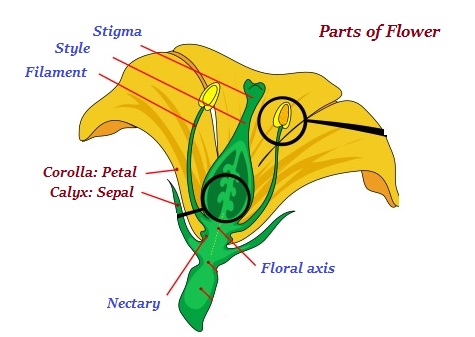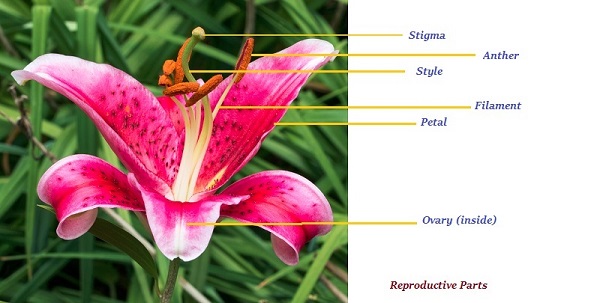
- Biology Notes for UPSC IAS Prelims (Part II)
- Biology - Home
- Biology - Classification of Organisms
- Biology - Cell Division
- Biology - Virus
- Biology - Bacteria
- Biology - Fungi
- Biology - The Roots
- Biology - The Plant Stem
- Biology - The Plant Leaf
- Biology - The Flowers
- Biology - The Fruit
- Biology - Plant Diseases
- Biology - The Blood
- Biology - Blood Group
- Biology - Human Brain
- Biology - Skeleton System
- Biology - Endocrine System
- Biology - Endocrine Diseases
- Biology - Carbohydrate
- Biology - Proteins
- Biology - Fats
- Biology - Vitamins
- Biology - Minerals
- Biology - Genetic Terminology
- Organisms & their Chromosome Counts
- Biology - Viral Diseases
- Biology - Bacterial Diseases
- Branches of Biology
- Inventions & Discoveries in Biology
- Nobel Prize in Biology
Biology - The Flowers
Introduction
Flowers, as all of us interpret, are the beautiful parts of the plants, which beautify the environment by their enthralling colors and decisive fragrance.
But flower is biologically the reproductive part of the plant.

Functions of Flower
Following are the major functions of a flower −
The primary function of a flower is reproduction by the process of the union of sperm with eggs.
Depending upon the inherent property, flowers may facilitate selfing, which means fusion of sperm and egg from the same flower OR it may facilitate outcrossing, which means fusion of sperm and eggs from different individuals in the respective population.
The flowers produce diaspores (consisting of a seed or spore) without fertilization.
The flower is the site where gametophytes (is the sexual phase) develop.
Some of the flowers fascinate animals, birds, and other insects, so as to cause them to be vectors for the transfer of pollen.
After sometime of fertilization, the ovary of the flower develops into fruit that contains seeds.
Parts of Flower
Primarily, the parts of a flower are categorized as −
The Vegetative Part and
The Reproductive Part
Let’s discuss them in brief −
Vegetative Part
Calyx − Calyx is the outermost part that consists of some units known as sepals. It is typically of green color (see the image given below).
Corolla − Corolla is the second (next to calyx) coil towards the apex, composed of units known as petals. Petals are usually thin, soft, and colored. It attracts insets and birds that ultimately help in pollination.

Reproductive Part
Androecium − It consists stamens (the male sex organ). Every stamen has three parts namely Filament, Anther, and Connective.
Gynoecium − It is the inner most part of the flower and consists of carpels (female sex organ).
Carpels consist of ovary, style and stigma, collectively known as a pistil.

Pollination
Pollination is basically the process of movement of pollen from the anthers to the stigma.
When the pollens move to stigma of the same flower, it is known as self-pollination; on the other hand, if pollen move to stigma of other flower, it is known as cross-pollination.
Pollination Process
Pollination process occurs through different mediums (see the table) −
| Process (Pollination) | Medium (Pollination) |
|---|---|
| Anemophilous | By air |
| Entomophilous | By insects |
| Hydrophilous | By water |
| Chiropteriphilous | By bats |
| Malacophilous | By shells |
| Ornithophilous | By birds |
| Zoophilous | By animals |